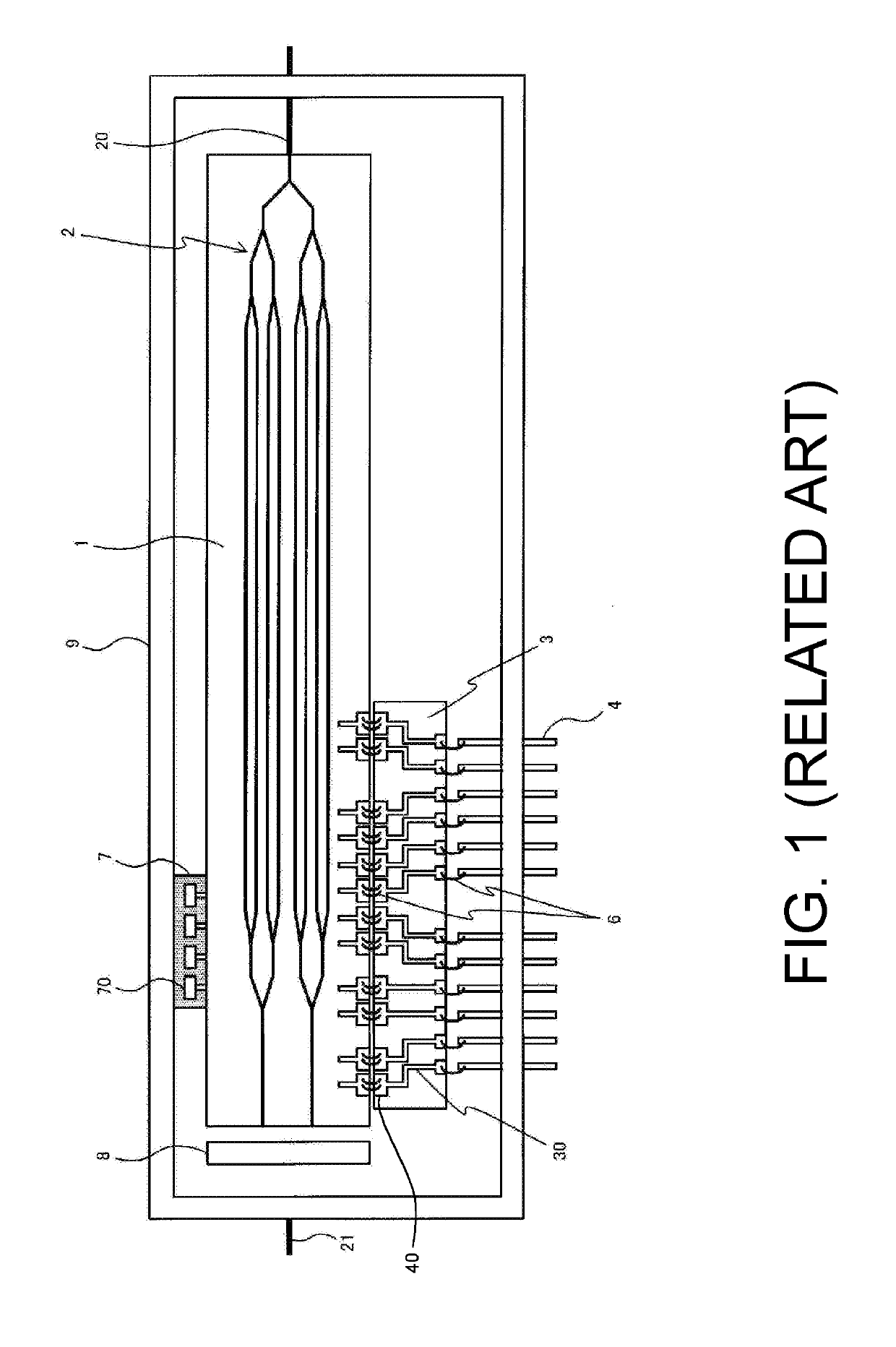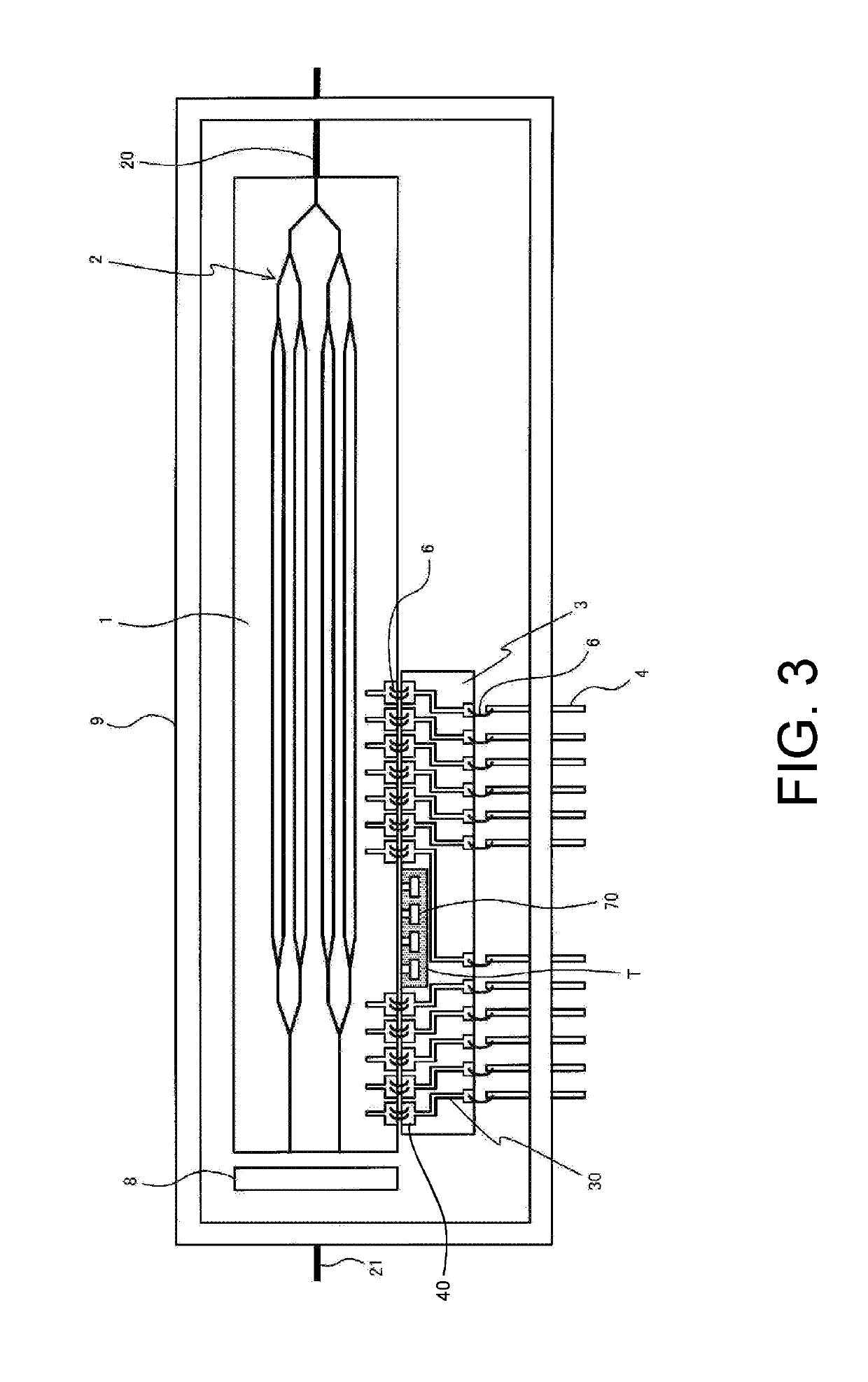Optical modulator and optical transmission device using the same
a technology of optical modulator and optical transmission device, which is applied in the direction of optics, fibre transmission, instruments, etc., can solve the problems of deterioration of reliability, significant heat generated in the terminal substrate, and temperature drift in the optical modulator
- Summary
- Abstract
- Description
- Claims
- Application Information
AI Technical Summary
Benefits of technology
Problems solved by technology
Method used
Image
Examples
third embodiment
[0037]In the disclosure, as shown in the third embodiment in FIG. 4, when the terminating unit T and the electrical wirings 31 for light reception are disposed on the same relay substrate 3, a configuration may be adopted that the terminating unit T and the electrical wirings 31 for light reception are disposed to be separated by a gap, and the high frequency signals leaking from the terminating unit T do not enter the electrical wirings 31 for light reception.
fourth embodiment
[0038]When the light receiving elements PD are provided, as shown in the fourth embodiment in FIG. 5, a configuration may be used that a relay substrate is formed of two substrates 33 and 34, and the substrate 33 where the terminating unit T is provided and the substrate 34 where the electrical wirings 31 for light reception are separately formed. In this manner, when the substrates 33, 34 are different from each other, it is possible to effectively suppress the high frequency signals from entering the electrical wiring 31.
fifth embodiment
[0039]In addition, as shown in the fifth embodiment in FIG. 6, electrical wirings for light reception may not be formed in the relay substrate 3, and can be replaced with wire bondings 6. Although the number of processes slightly increases due to bonding, it is then possible to greatly increase the degree of freedom in design such as a layout design of the light receiving elements PD and a layout design of various wiring patterns and the like, and it is possible to isolate the relay substrate 3 where signal lines of the light receiving elements PD and the terminal resistors are formed. Here, in FIGS. 5 and 6, the input / pins 41 outputs the detection signals of the light receiving elements PD. Input / output pins 43 supply a DC bias voltage. Input / output pins 44 mainly supply electrical signals for modulation. Here, a part of the input / output pins 44 may be used for DC bias.
[0040]In addition, as shown in FIGS. 7 to 9, at least one of an electrical wiring 33 for relaying a DC bias voltag...
PUM
| Property | Measurement | Unit |
|---|---|---|
| thickness | aaaaa | aaaaa |
| electric field | aaaaa | aaaaa |
| DC bias voltage | aaaaa | aaaaa |
Abstract
Description
Claims
Application Information
 Login to View More
Login to View More - R&D
- Intellectual Property
- Life Sciences
- Materials
- Tech Scout
- Unparalleled Data Quality
- Higher Quality Content
- 60% Fewer Hallucinations
Browse by: Latest US Patents, China's latest patents, Technical Efficacy Thesaurus, Application Domain, Technology Topic, Popular Technical Reports.
© 2025 PatSnap. All rights reserved.Legal|Privacy policy|Modern Slavery Act Transparency Statement|Sitemap|About US| Contact US: help@patsnap.com



